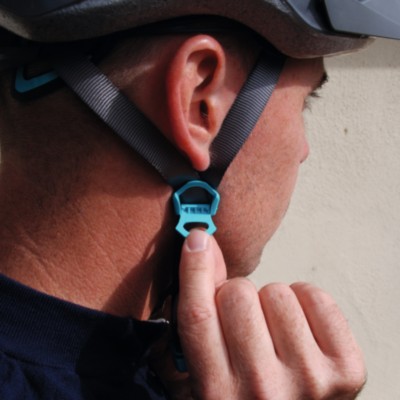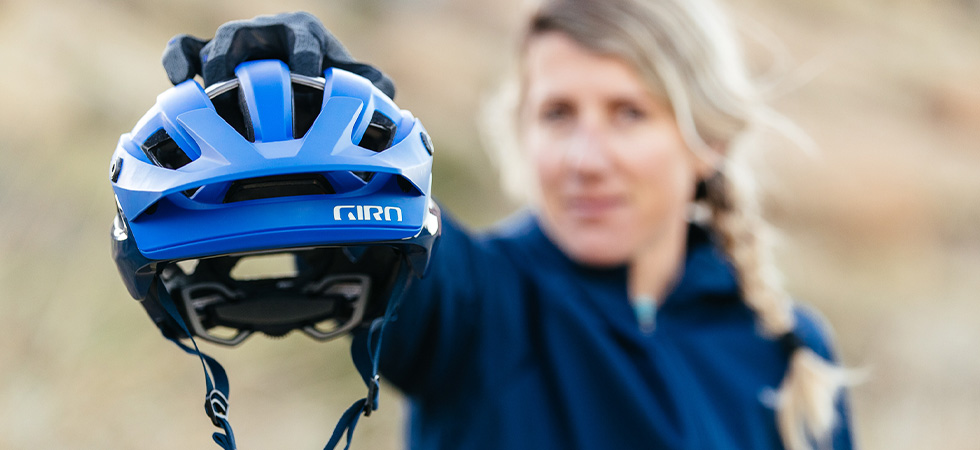Protection and safety. A new generation bicycle helmet is so light, so well ventilated and comfortable that you forget about it practically as soon as you put it on. In addition, bicycle helmets are available in all kinds of colours and designs so that everyone can find the helmet that suits them and their personal taste. Incidentally, of course, a bicycle helmet protects against serious head injuries, because after all, the head is affected in over 50 % of bicycle accidents.
the right Bike helmet for everybody
At Giro you will find exactly the right bike helmet you need. Whether you are on a road bike or on the trail, whether you are a beginner or an expert, Giro has a suitable model for you!
Gire bike helmets men
Gire bike helmets women
While there are significant anatomical differences between men and women in virtually all parts of the body, making it necessary to develop different fits for many products worn on the body, such as shoes, the shape of the head and skull is virtually the same for men and women. Measurements have shown that there are no significant differences. The distances and positions of the eyes, ears and nose are also the same. Only the average head size is smaller in women. Based on these findings, Giro helmets do not have a special fit for women.
Gire bike helmets kids
When every curb becomes a jump and every mud puddle calls for a slide, the Giro Tremor is the helmet to make the wide grin last.
Equipped with some of the best technologies from Giro’s adult collection, such as the In-Mold construction for light weight and increased durability and the proven Roc Loc Sport MIPS adjustment system.
Giro Tremor Features:
• In-Mold polycarbonate shell with EPS inner shell
• Fully covered EPS shell
• Roc Loc Sport adjustment system
• 18 vents
• Removable visor
• Reflective zones
• Weight: 260 g
HOW DOES THE Bike HELMET FIT BEST?
To protect properly, a helmet must fit properly. To achieve the best possible fit, Giro makes its helmets in a wide range of different sizes.
STEP 1: FIND THE RIGHT SIZE
To find the correct size, the circumference of the head must be measured. This can be done easily with a simple measuring tape. The circumference is measured just above the ears and goes over the forehead and the back of the head. Once the head circumference has been determined, the correct size is selected using the table. However, the measured head circumference can only be a guideline, as the individual head shape also influences the correct helmet size.
Put on the helmet with the adjustment system open. If the helmet pinches in one or more places, replace it with a larger helmet. Now slightly tighten the adjustment system. The helmet should now sit comfortably on your head without slipping or wobbling when you slightly bend your head. If this is the case, choose a smaller size.

STEP 2: BELT ADJUSTMENT
Open the Tri Loc strap guide on both sides, put on the helmet and move the Tri Loc guides to just below the ears so that a comfortable fit is achieved. The straps must not be twisted under each other and both should be evenly tensioned. The helmet sits straight on the head. Close the Tri Loc guide again. The straps now meet just below the ears and rest against the head.

STEP 3: ADJUSTMENT OF THE CHINSTRAP AND THE FASTENER
Put the helmet on and close the buckle. Hold the buckle with one hand and pull the end of the chin strap with the other until the helmet is tight. How tight? Tight enough so that the mouth can be opened wide enough to eat and the chin strap does not interfere with breathing. Make sure the strap sits behind the chin and that it cannot slip down the front of the chin. Secure the loose end of the strap with the rubber O-ring.

STEP 4: ADJUSTING THE FITTING SYSTEM
Put the helmet on and slowly, until a slight pressure is felt, turn the adjustment wheel of the fitting system closed. The helmet now fits tightly, but still comfortably and without pressing. On some of our helmets, when the helmet is off, the outriggers can be clicked out of the Snap-Fit helmet anchorage at the front and clicked back in one step further forward or back. This allows the fit to be increased or decreased. For safety reasons, we recommend that you do not adjust the helmet while riding.

STEP 5: ADJUSTING THE HIGHT OF THE FITTING SYSTEM
In addition to adjusting the head circumference, the Roc Loc® 5 adjustment system can also be used to adjust the height and thus the inclination of the helmet. To do this, simply put on the helmet as described and adjust it. Now the Roc Loc® 5 system can simply be moved up and down so that the helmet achieves the optimum fit and the greatest possible comfort for you.

STEP 6: END CHECK OF THE SEAT
When all the settings and adjustments have been made, the final step is to check that the helmet fits correctly and securely. Put the helmet on, grasp it with both hands at the sides and turn it slightly to the right and left. If the skin on your forehead moves slightly, the helmet is on correctly. If it does not, the helmet is too loose. Now roll the helmet slightly forwards and backwards over your head with both hands. IMPORTANT: If the helmet rolls completely off the head, slides far forward into the field of vision or rolls backwards so that the forehead is unprotected, the helmet does not fit correctly. If no improvement is achieved by readjustment and adjustment, DO NOT USE THIS HELMET. A different model or size must be selected. If the helmet fits securely and comfortably, take a short test ride. When fitting the helmet, make sure that the field of vision and your movements are not restricted. If the helmet fits securely and comfortably and does not wobble or pinch, nothing stands in the way of your purchase.

Bike Helmet CARE INSTRUCTIONS
CLEANING THE BIKE HELMET
Helmets are made of materials that can be damaged by conventional cleaners. Cleaners based on petroleum or solvents can destroy the helmets. It is best to wash your Giro helmet with a soft cloth or sponge with warm water and a splash of washing-up liquid. The pads can be removed from the helmet and washed separately in warm soapy water.
STORAGE OF THE BIKE HELMET
Extreme heat can deform or destroy the helmet, so do not place the helmet behind a window pane or leave it in the car. It is best for the helmet to be stored in a dry, cool and dark place after use.
BIKE HELMET REPLACEMENT & WARRANTY
WHAT IF A HELMET IS DAMAGED?
Helmets do not last forever. If the helmet has any obvious damage (crack in the shell, dent or similar), do not use the helmet any more. Damage can reduce or severely limit the protective function of the helmet. Damage is not always visible. If you have had an accident with the helmet or if the helmet has fallen off, the inner structure may be damaged. Here, too, replacement is highly recommended.
HOW OFTEN DOES A BIKE HELMET NEED TO BE REPLACED UNDER NORMAL CONDITIONS AND USE?
We give a general recommendation of 3 years. However, this period does not apply from the production date, but only from the day on which the helmet is used for the first time. The “ageing process” begins with a bicycle helmet when it is used. From then on, it is exposed to cold, heat, sweat, UV radiation and various impacts that can more or less damage the helmet in the long run and reduce its protective effect.
You want to know more about bike guides? Here you can find related articles that deal with this topic:
→ MIPS Technology
→ Bike Protectors: How do they work
→ Der große Gravel Bike Guidebook




